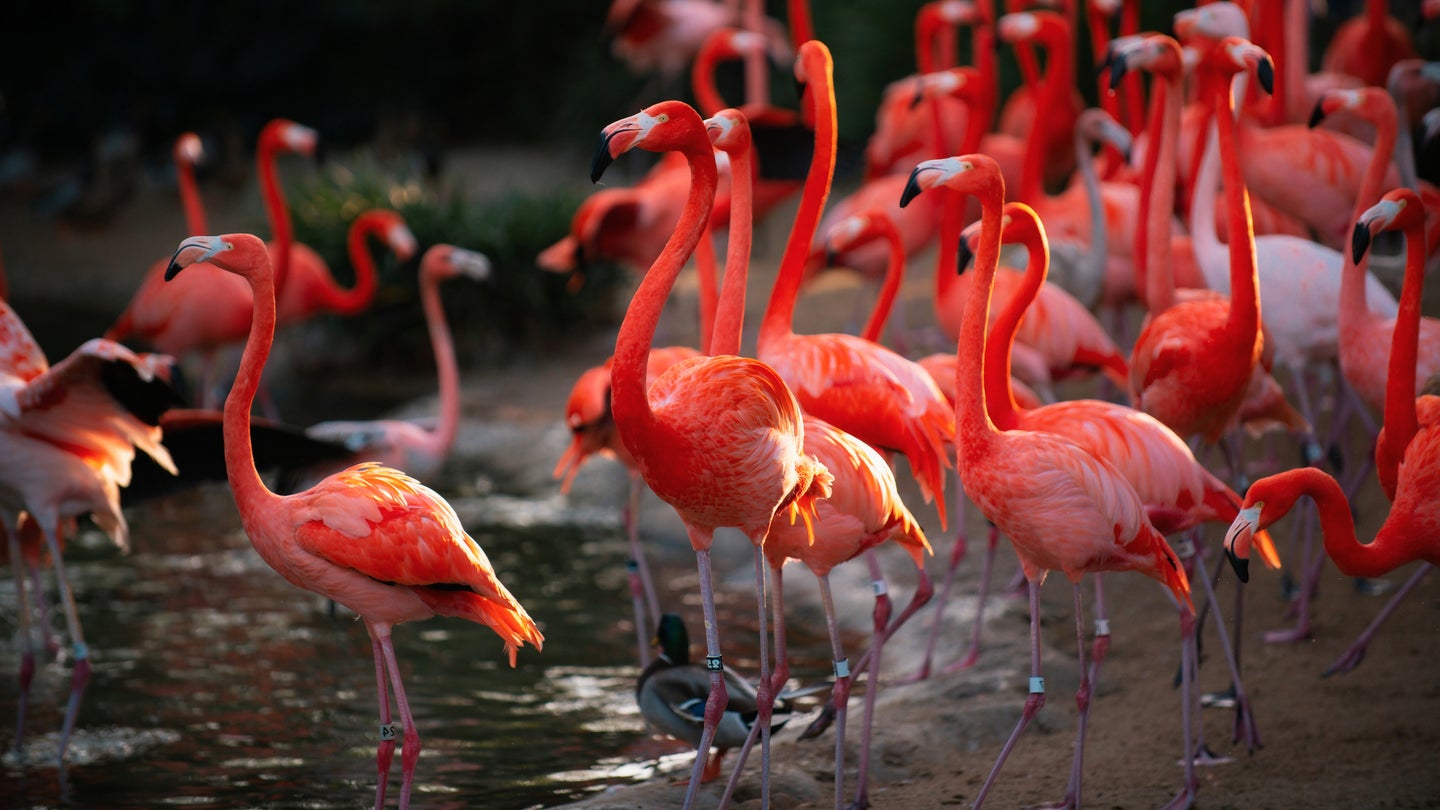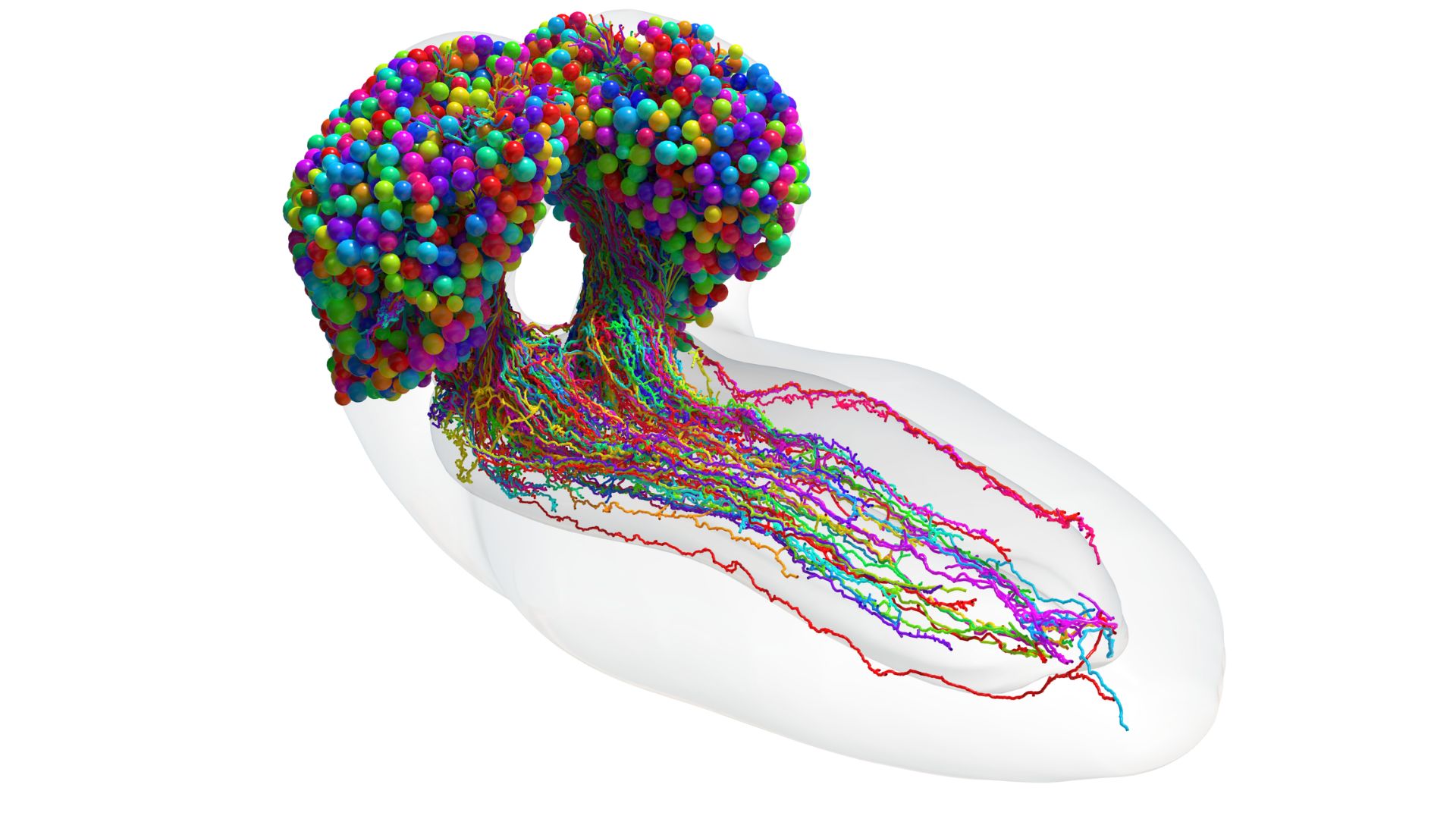Plus other weird things we learned this week.
PopSci Staff
|
Published Feb 28, 2024 9:00 AM EST

What’s the weirdest thing you learned this week? Well, whatever it is, we promise you’ll have an even weirder answer if you listen to PopSci’s hit podcast. The Weirdest Thing I Learned This Week hits Apple, Spotify, YouTube, and everywhere else you listen to podcasts every-other Wednesday morning. It’s your new favorite source for the strangest science-adjacent facts, figures, and Wikipedia spirals the editors of Popular Science can muster. If you like the stories in this post, we guarantee you’ll love the show.
Heads up: Rachel and Jess are planning a livestream Q&A in the near future, as well as other fun bonus content! Follow Rachel on Patreon and Jess on Twitch to stay up to date.
FACT: Birds? Making milk!? It’s more likely than you think.
In a world of upwards of 10,000 species of birds, only three kinds of birds create “milk”: doves/pigeons, flamingos and emperor penguins. This is not your typical mammalian milk because, as you may or may not know, birds do not have nipples! But it is compositionally similar to that milk and serves a similar purpose, though it doesn’t bear much physical resemblance. Unfortunately it looks like cottage cheese. Woof.
So how do birds make milk? They secrete it from the lining of their crops, which is a pouch-like part of their digestive system typically used for food storage. The hormone that stimulates pigeon milk production is called prolactin, which is the same hormone that causes lactation in mammals like us!
So let’s start with Pigeon Milk! The modern day pigeon or rock dove typically lives in kind of unforgiving environments like cities, so when their babies are born they need a lot of protein and fat—and the pigeons don’t have a reliable way of providing that outside of, you guessed it, creating crop milk! They start making milk a few days before the eggs are due to hatch and start feeding it to the babies, aka squabs, as soon as they emerge. The squabs are fed an exclusive diet of crop milk for the first week or two of their life, and then gradually the parents mix in adult food. Amazingly, both the male and female Pigeons create crop milk!On to flamingo milk. Similarly to pigeons, flamingo male and females produce crop milk for their babies. The reason they evolved the ability to create milk is that they have a very specific mechanism for feeding that is made possible by their unique beak. When baby flamingos are born their beaks are not developed enough yet for this type of feeding, so the parents feed them crop milk until they can eat on their own. A radical thing about flamingo milk is that it is BRIGHT RED because of all the carotenoids (a type of organic pigment found in nature) in their diet of little teeny tiny shrimps.
Lastly, penguin milk! Male Emperor Penguins incubate a single egg on their feet for around two months in the Antarctic winter while the female goes out to sea to feed. When the chick hatches, to tide it over until the time the female returns with food, the male feeds the chick crop milk. Only the males can create crop milk in this species.
So the next time Brewster from Animal Crossing offers your Pigeon Milk in your latte, keep in mind that he thinks of you as a baby bird that could use some extra protein. Do with that information what you will!
FACT: Hermit crabs are wearing our trash
Hermit crabs are super cool. They evolved to have bodies that require shells for protection, but not to create their own. As far back as 200 million years ago, the fossil record shows us that hermit crabs were already tooling around shopping for homes discarded by mollusks. They have these asymmetrical, squishy bodies that would be super impractical, except that they’re designed to fit into—and hold onto—as many shapes of shell as possible. They evolved from free-living crabs sometime before 200 million years ago, and in at least a couple cases evolved back into shell-free crabs with harder exoskeletons.
They engage in some truly wild behavior to find new shells, including something known as a “vacancy chain.” Check it out:
But what happens when shells are in short supply? Apparently when a homemade snail shell isn’t available, a store bought chunk of plastic will do.
People have spotted—and taken pictures of—hermit crabs wearing bottle caps, light bulb bases, and other bits of trash for years. In a recent study, Polish researchers decided to delve into the internet record of trash-wearing hermit crab photos to try to learn more.
The researchers did a search of the existing literature, but only found four studies on hermit crabs using plastic debris and other human waste. So they also searched Flickr, iNaturalist, Google Images, YouTube, and Alamy with the same keywords to find photographic evidence of the phenomenon. They were able to find 386 individuals with artificial shells, representing 10 of the world’s 16 species of terrestrial hermit crabs. The behavior was spotted in every tropical region on the planet. They gleaned as much info as they could from each photo to try to determine why and how crabs would resort to living in garbage.
They found that hermit crabs are particularly fond of white and black bottle caps, but have been seen making mobile homes out of everything from broken bottles to the threaded bits of lightbulbs.
It’s possible that hermit crabs are using our garbage because the species they tend to get shells from are on the decline. It’s also possible that the combination of strength and lightness found in plastic makes them see the materials as better than natural shells, at least in some cases. But it’s also possible that the critters are simply attracted to plastics because they smell like food, which is a known issue. Hermit crabs are among the estimated 100,000 animals that die in the ocean due to plastic pollution each year, and there’s evidence that microplastics can impact their cognitive abilities. Those problems extend to the shore, too. One study estimated that half a million hermit crabs die each year on just a pair of extremely remote islands in the pacific due to plastic waste. They climb into old plastic bottles, which smell like a food source due to the presence of a particular chemical, and get stuck inside. Then, when they die, their scent attracts other hermit crabs to come see what’s up—an evolutionary trick that exists to help them find vacant shells. Unfortunately, those hermit crabs also get trapped.
FACT: Not everything is rocket science—but sometimes lube is
By Amanda Reed
Lube has a long history, from the Romans using olive oil as lubrication to KY Jelly’s start as a surgical lubricant. And we have literal rocket science to thank for Astroglide.
In 1977 during the building of the Space Shuttle Enterprise, a young scientist by the name of Daniel X. Wray was working at the Edwards Airforce Base in California to improve heat transfer in the Enterprise’s cooling system. He discovered a water-soluble, non-toxic solution that became more slippery when wet. He bottled up this magical liquid and gifted it to a male colleague as a gag birthday gift. Then, to Wray’s surprise, his friend came back asking for a refill. That’s when the rocket scientist knew he had something incredible on his hands.
Wray tinkered with the formula, creating 300 different versions of Astroglide before landing on the version known today. He then licensed it to a North Hollywood-based company in 1982 and… went back to rocket science. Relatable!
When the company that he licensed his liquid creation to closed in 1991, he purchased the rights back, got an $8,500 business loan, and formed BioFilm, which is the current parent company of AstroGlide. He gave it the name we know today as a nod to its rocket science roots. Wray passed away in 2018 after a brief battle with cancer, but his legacy lives on in the hearts of his community—and the hands of the many people using Astroglide today.
Note: This article have been indexed to our site. We do not claim legitimacy, ownership or copyright of any of the content above. To see the article at original source Click Here













